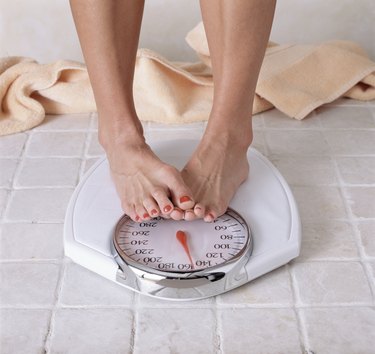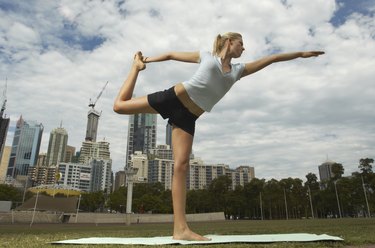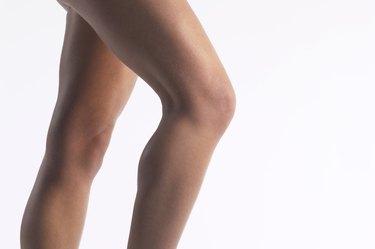
Dancers are known for being flexible and in good shape, and it is true that dancing offers a great workout and many health benefits. Not only does it work all major muscle groups, but it also requires coordination, flexibility and strength. Modern dancing or dance aerobics focus on coordination, while other forms of dancing, like ballet, are more focused on form. In addition, dance is a form of personal expression and enjoyment, which means it is good for your body and your mind.
Weight Control
Video of the Day

Dancing is a form of aerobic exercise, which means it is vigorous enough to raise your heart and breathing rates. If you do it on a regular basis, it can help you lose weight as much as other forms of exercise would. According to professional dancer Barbara Craddock, ballet can burn more calories than other forms of dancing. A 150-pound ballet dancer can lose up to 432 calories per hour. Salsa, ballroom dancing and disco come in second at about 396 calories an hour. Slow forms of dancing such as the waltz burn much less, at about 216 calories per hour.
Video of the Day
Balance and Coordination

All forms of dancing improve balance and coordination, although some are better at it than others. The Argentinian tango, for example, requires lots of twists, leg kicks and torso rotations. It requires keeping your center of balance stable to make sure you don't lose your step as you twist and turn. Group dancing, meanwhile, relies heavily on coordination, as all dancers need to be in tune with each other for the performance to work.
Posture

Dancing works the muscles and fibers that control posture, according to professional dancer and performance coach Christina Chitwood. These muscles, located around the spine, contract to help you maintain posture. When you don't have good muscle tone, the muscles have to work harder to contract, so they get tired more quickly. As a result, you might end up slouching because you can't maintain your posture. Dancing works the core muscles –stomach and back—as well as the muscles surrounding the spine. As you train, you'll gain better posture and better muscle tone.
Muscle Tone

Dancing is especially good for the muscles in your legs and glutes. It also works the hips, your lower back and your abdomen. Some forms of dancing also work the arms and the upper body. As muscle tone improves and flexibility increases, you'll may experience relief from back pain and an increase in stamina.